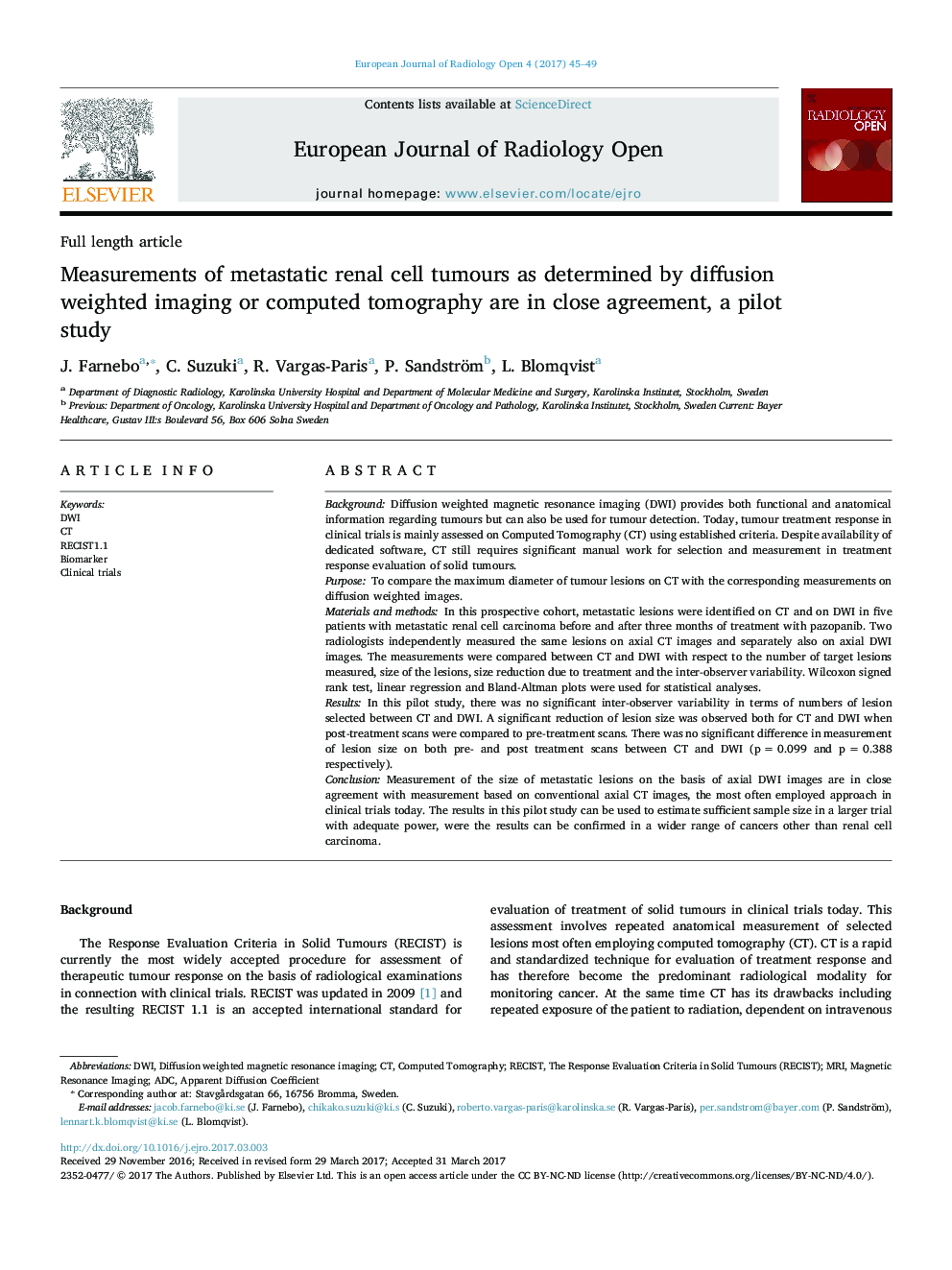| Article ID | Journal | Published Year | Pages | File Type |
|---|---|---|---|---|
| 5726430 | European Journal of Radiology Open | 2017 | 5 Pages |
BackgroundDiffusion weighted magnetic resonance imaging (DWI) provides both functional and anatomical information regarding tumours but can also be used for tumour detection. Today, tumour treatment response in clinical trials is mainly assessed on Computed Tomography (CT) using established criteria. Despite availability of dedicated software, CT still requires significant manual work for selection and measurement in treatment response evaluation of solid tumours.PurposeTo compare the maximum diameter of tumour lesions on CT with the corresponding measurements on diffusion weighted images.Materials and methodsIn this prospective cohort, metastatic lesions were identified on CT and on DWI in five patients with metastatic renal cell carcinoma before and after three months of treatment with pazopanib. Two radiologists independently measured the same lesions on axial CT images and separately also on axial DWI images. The measurements were compared between CT and DWI with respect to the number of target lesions measured, size of the lesions, size reduction due to treatment and the inter-observer variability. Wilcoxon signed rank test, linear regression and Bland-Altman plots were used for statistical analyses.ResultsIn this pilot study, there was no significant inter-observer variability in terms of numbers of lesion selected between CT and DWI. A significant reduction of lesion size was observed both for CT and DWI when post-treatment scans were compared to pre-treatment scans. There was no significant difference in measurement of lesion size on both pre- and post treatment scans between CT and DWI (p = 0.099 and p = 0.388 respectively).ConclusionMeasurement of the size of metastatic lesions on the basis of axial DWI images are in close agreement with measurement based on conventional axial CT images, the most often employed approach in clinical trials today. The results in this pilot study can be used to estimate sufficient sample size in a larger trial with adequate power, were the results can be confirmed in a wider range of cancers other than renal cell carcinoma.
